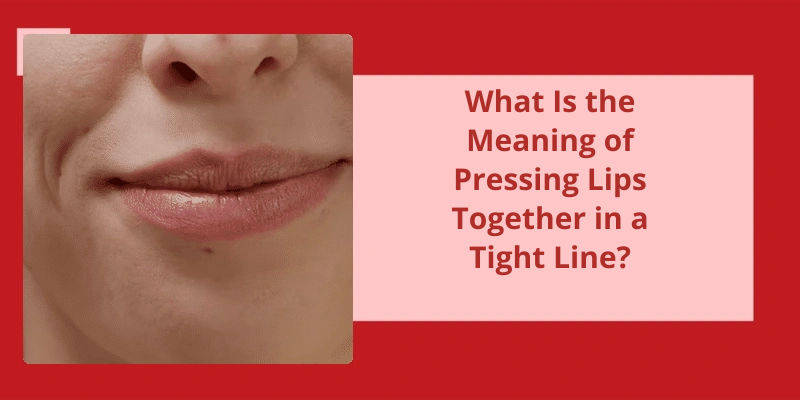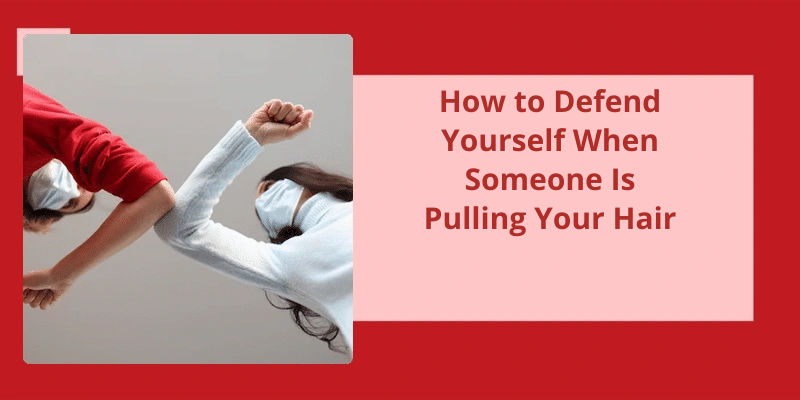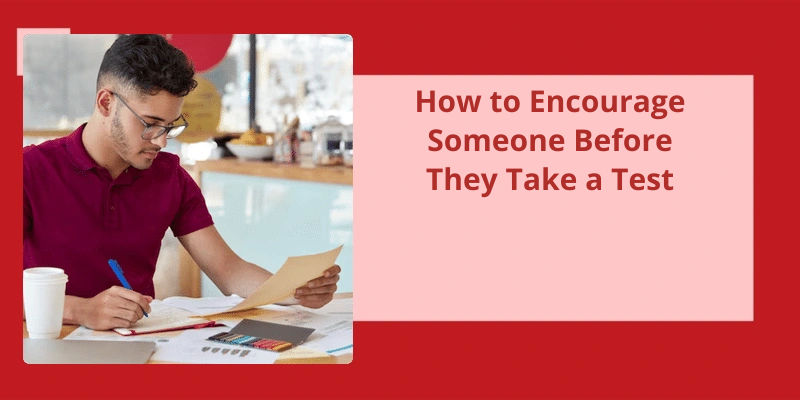The human body is an intriguing vessel of communication that often speaks louder than words. From our body language to facial expressions, our actions convey a wide range of emotions that are often more prominent than what we say. One such expression that holds substantial meaning is the act of pressing one's lips together in a tight line. It’s a gesture that indicates disagreement, opposition, or refusal, and is often used to communicate criticism or disapproval. This subtle yet powerful gesture can be observed in a variety of situations, from personal conversations to public events, making it an essential tool for effective communication. Understanding the significance of pressed lips can help foster better communication and a deeper understanding of the intentions of others.
What Does Pressing Lips Together Mean?
This gesture is often a subconscious expression of negative emotions, such as anger or frustration. When someone is feeling uncomfortable or displeased, they may tightly press their lips together, signaling their discomfort nonverbally. Others may interpret this as a sign to back off or change the subject. It’s important to note that this gesture may be culturally specific, and it’s meaning can vary depending on the context and the individual.
Suppressed emotions. Pressing lips together can also indicate that someone is trying to suppress their emotions. In situations where a person may not want to reveal how they’re truly feeling, they may tightly purse their lips to hold back their emotions. This gesture can be a way to hide negative feelings or to maintain a neutral appearance in a given situation. It can also indicate that the person is deep in thought and prefers to remain silent.
Disapproval. When someone disapproves of someone or something, they may press their lips together instinctively. This gesture can convey not only disapproval but also a lack of trust or respect for others. It may also indicate that the person has a negative opinion or judgment about a particular person or situation. In a group setting, this gesture can be a subtle way of communicating that one doesn’t support an idea or decision made by others.
Anxiety. Individuals who suffer from anxiety may press their lips together as a way to cope with stress or nervousness. This gesture can help them manage their nervous energy by channeling it into a physical habit. It may also indicate that the person needs to calm their thoughts or emotions.
Concentration. Pressing the lips together can also be an indication of intense concentration. For example, when someone is working on a difficult task that requires their full attention, they may press their lips to help them focus. This gesture can indicate that the person is fully engaged in the task at hand and is determined to complete it to the best of their ability.
Quiet contemplation. Finally, pressing lips together may also indicate that someone is taking a moment to quietly contemplate something. When someone is deep in thought, they may instinctively purse their lips as a way to focus their mind. In this case, pressing lips together may be a positive expression that can lead to greater self-awareness and personal growth.
Body language plays a significant role in communication and can reveal a person’s inner thoughts and emotions. One such body language cue is when someone tightens their lips. This gesture can signify a range of emotions from anger to discomfort or even secrecy. In English, we refer to this gesture as being “tight-lipped,” indicating that the person is holding something back or refusing to speak about a particular topic. In this article, we will explore the meaning and various interpretations of this body language cue.
What Does It Mean When You Tighten Your Lips?
Tightening your lips is one of the most common nonverbal cues that people use to communicate their emotions or thoughts without saying anything. Depending on the context, it can convey a wide range of meanings from anger and frustration to anxiety or concentration. In general, tightening your lips involves pressing your lips tightly together or pursing them in a way that reduces the amount of air and movement in your mouth.
By suppressing their feelings, they try to avoid confrontation or conflict, or they may not want to reveal their vulnerability to others.
By reducing the amount of movement in your lips and mouth, you may be able to increase your attention span and avoid distractions. However, if you tighten your lips too much or for too long, it can also lead to physical discomfort or tension, such as jaw pain or headaches.
When someone is described as being “tight-lipped” in English, it usually means that they’re reluctant to share their thoughts or feelings with others. This can be for a variety of reasons, such as a desire for privacy, a fear of being judged or criticized, or a need to maintain a professional image. People who’re tight-lipped may give short, vague answers or avoid eye contact when asked questions, and they may seem distant or aloof to others.
However, being too tight-lipped can also have negative consequences, such as causing misunderstandings or damaging relationships. If you’re communicating with someone who’s tight-lipped, it may be helpful to approach them gently and respectfully, and to listen actively to their concerns. By showing empathy and understanding, you may be able to build trust and encourage them to open up to you.
How Tight Lips Can Be Interpreted Differently in Different Cultures
Different cultures have varying interpretations of the tight-lipped expression. It can be perceived as a sign of anger, disapproval, or secrecy in some cultures, while in others, it may indicate politeness, respect, or attentiveness. These interpretations can vary based on factors such as social norms, communication styles, and contextual cues.
Source: TIGHT-LIPPED definition | Cambridge English Dictionary
Body language can speak volumes, and one such nonverbal cue is puckering lips. This common gesture is universally recognized for it’s association with romance and intimacy. People often pucker their lips when they’re about to kiss someone, but that’s not the only meaning behind this expression. In this article, we’ll take a closer look at the various meanings of puckering lips and what they could signify in different contexts.
What Does Puckering Lips Mean?
Puckering lips is a common gesture that indicates a persons desire to kiss someone, and it’s often seen as a romantic gesture. However, it can also convey other emotions such as frustration, anger, or disappointment.
For example, in some parts of Europe, it’s customary to greet friends and family members with a kiss on both cheeks.
This can be seen in situations where two people are about to share an intimate moment.
From romantic attraction to frustration and disappointment, this simple gesture can communicate a lot about a persons thoughts and feelings.
Now that we understand what pushing lips means, let’s explore the various scenarios in which this nonverbal signal is used and the different ways it can be interpreted depending on the context and culture. Whether intentional or unconscious, pushing lips can communicate a range of emotions and needs, from pain and discomfort to attraction and flirtation. Let’s dive in.
What Does Pushing Lips Mean?
Pushing lips is a nonverbal communication method commonly used to signal others to help them during distress. It involves puckering or pushing out the lips in a certain way that’s easily recognizable by those around them. This is a behavior that’s exhibited not only by humans but also by several animals such as dogs, chimpanzees, and orangutans.
People often push out their lips when they’re upset or irritated, although the gesture can also be used to express affection or a desire to kiss someone.
Pushing out ones lips can also send a message of vulnerability. This is especially apparent when the person exhibiting the behavior is a child. Children often push out their lips as a way of seeking comfort or reassurance from their caregivers. In these instances, the gesture can be seen as a way of saying, “I’m hurt, scared, or upset, and I need your help to feel better.”
Interestingly, pushing lips can also have a sexual connotation in some cultures. In some Asian countries, for example, women are encouraged to push their lips out slightly when they smile as a sign of femininity and attractiveness. Similarly, in some parts of Africa, women push their lips out when dancing as a way to signal their sexual availability.
It’s a powerful nonverbal communication method that can signal distress, vulnerability, affection, or even sexual availability. Regardless of the situation, however, the message behind this behavior is clear: “I need your attention or help right now.”
Cultural Differences in the Interpretation of Pushing Lips
- Pushing lips out can have different meanings in different cultures.
- In some cultures, it’s a sign of being upset or annoyed.
- In other cultures, it can be a way of showing respect or agreement.
- For example, in Japan, pushing out your lower lip is a way of expressing sympathy or understanding.
- However, in some African cultures, pushing out the lips can be seen as a sign of disrespect.
- It’s important to be aware of these cultural differences when communicating with people from different backgrounds.
What Does It Mean When Someone Clenches Their Lips?
Nonverbal communication can be a powerful tool in human interactions, and one of the most expressive features of our face is the mouth. Our lips can convey a wide range of emotions and feelings that sometimes words can’t express. When someone clenches their lips, it may suggest that they’re uneasy or anxious. This can be an indication of a person trying to hide their true emotions or struggling to articulate themselves. It can be frustrating to communicate with someone who regularly clenches their lips, as it can signify a lack of trust or willingness to open up.
Alternatively, quivering lips can convey fear or sadness. It’s often related to the experience of trying to suppress tears, and can be a sign of a person who’s deeply affected emotionally. This is a clear example of how the human body can offer insight into the emotional state of a person, even when they say nothing at all.
Pursed lips are a gesture that often suggests anger or disagreement. A person may press their lips together tightly when they’re feeling irritated or upset, or when they’re trying to resist the urge to speak out. This can be a tell-tale sign of a person who’s unhappy or frustrated with the current situation, but is trying to maintain their composure. Individuals who communicate with pursed lips may benefit from learning how to effectively express themselves, as they may be hindering their ability to establish healthy relationships.
On the other hand, open and slightly parted lips indicate that a person is relaxed and generally at ease. At times, a person may feel more comfortable when listening to others than when speaking themselves; however, this doesn’t necessarily imply negative things. Open lips can be perceived as a readiness to listen to others and hear them out. Additionally, people tend to have more relaxed lips when they’re in comfortable social situations with those they trust.
While it’s important to be aware of the words we use when communicating, paying attention to nonverbal cues such as facial expressions, body language can also provide valuable information about a persons emotional state. Clenched lips, quivering lips, pursed lips and open lips, among others, are clear examples of how our facial expressions can communicate our thoughts and feelings. By striving to become better communicators, we can build stronger connections with those around us. It’s key to create trust, and to empathize, validate and understand the perspectives of others.
Language is full of intriguing idioms and expressions, and one that’s particularly curious is “purse your lips.” Have you ever wondered where it comes from? It turns out that it’s roots in the verb “to purse.” This article delves deeper into the origins of the phrase and how it’s evolved over time.
Where Does the Expression Purse Your Lips Come From?
The idiom of pursing ones lips has been around since at least the 14th century, according to historical sources. Back then, purses were an essential part of daily life for people from all walks of life. They used them to carry coins and money, among other things. Thus, it only makes sense that the metaphorical idea of “purse” was adapted to describe the way someone might pucker their lips tightly.
One theory posits that the association between pursing lips and a drawstring purse has to do with the pursed mouth appearing as though it’s been cinched shut just like a purse held closed with a drawstring. Another possibility is that the phrase originates from the French expression “faire la moue,” which means to pout or make a face. French influence on the English language has been significant, so it’s not surprising that a phrase like this would be borrowed.
We often associate this expression with disapproval, irritation, or frustration. For example, someone might purse their lips in disapproval when hearing something they don’t agree with or when hearing something they find unpleasant.
Interestingly, the act of pursing ones lips may also have a physiological basis. A recent study of facial expressions and their significance found that the act of pursing the lips might be linked to a natural inhibition of the action of swallowing. Participants in the study who were asked not to swallow for a few minutes began to purse their lips in what the researchers described as a “pre-swallowing posture.”
Overall, the phrase “purse your lips” is an example of how language evolves over time, drawing on cultural and linguistic influences from many different sources. Whether it originated from a French expression or a comparison to the old-style purses, it’s become a staple of the English language, used to express disapproval, irritation, and even physical sensations such as the inhibition of swallowing.
Other Idiomatic Expressions That Involve References to Purses or Money
There are various idiomatic expressions that relate to purses or money such as “a penny saved is a penny earned,” “money talks,” “break the bank,” “to cost an arm and a leg,” and “to have deep pockets.”
Conclusion
In conclusion, the art of nonverbal communication is just as important as verbal communication. The way one holds themselves, their facial expressions, and body language all communicate a message to the observer. Pressing lips together in a tight line is just one example of how body language can convey disagreement, opposition, or refusal. These nonverbal signals can help us navigate the complexities of human interaction and better understand the emotions and intentions of those around us. Therefore, paying attention to the nonverbal cues of others is a crucial skill that can improve our communication and ultimately our relationships with others.






